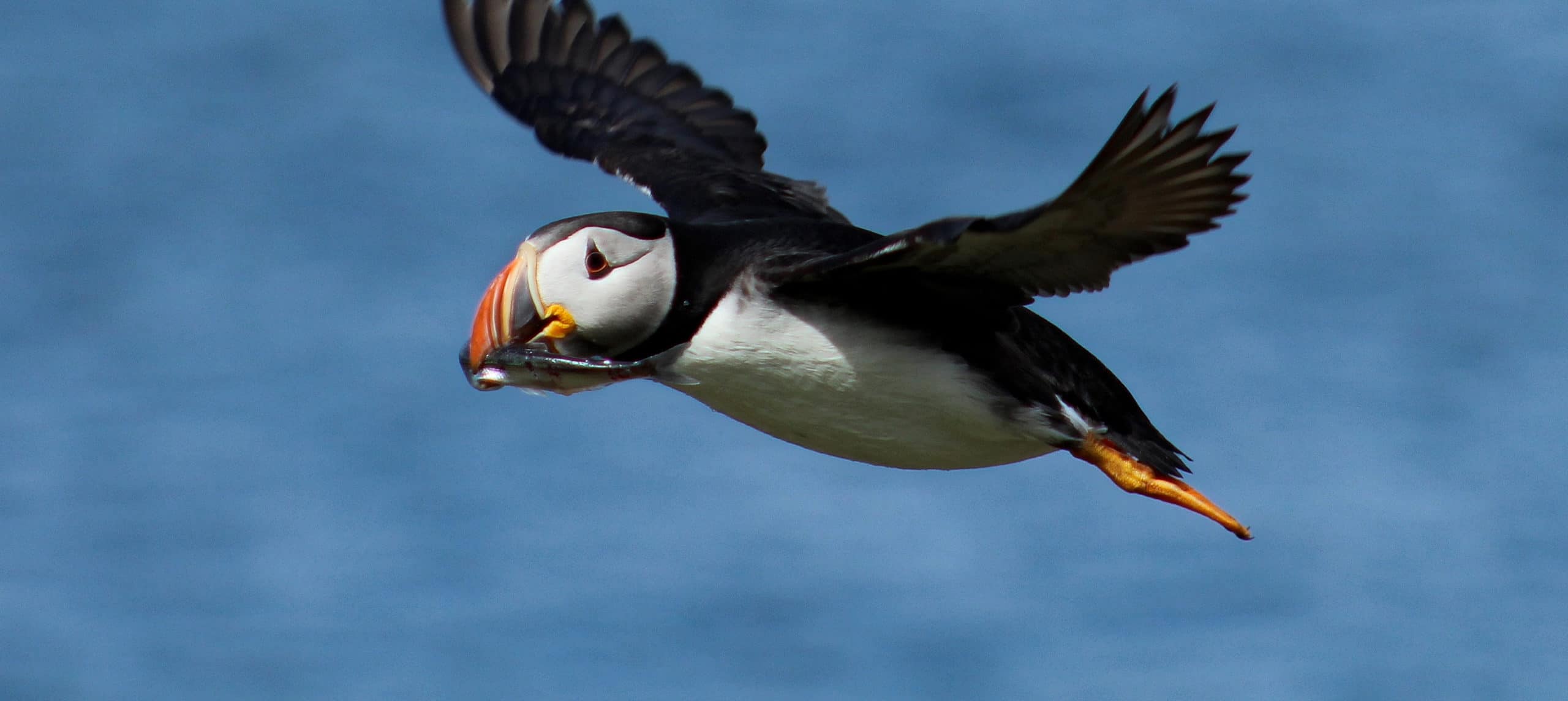Share this article
Wild Cam: Herring gulls steal food from hard-working puffins
The surrounding crowd was raucous, and the smell was even worse. But Kaylee Busniuk weathered the distractions like a champ, announcing the unfolding action in a detailed play-by-play.
Just as a puffin swooped in with its prize — a mouth full of fish — a herring gull would occasionally dive in for an interception, while Busniuk explained the action to the camera from her blind.
“It was kind of like being a sports broadcaster,” she said.
Enlarge
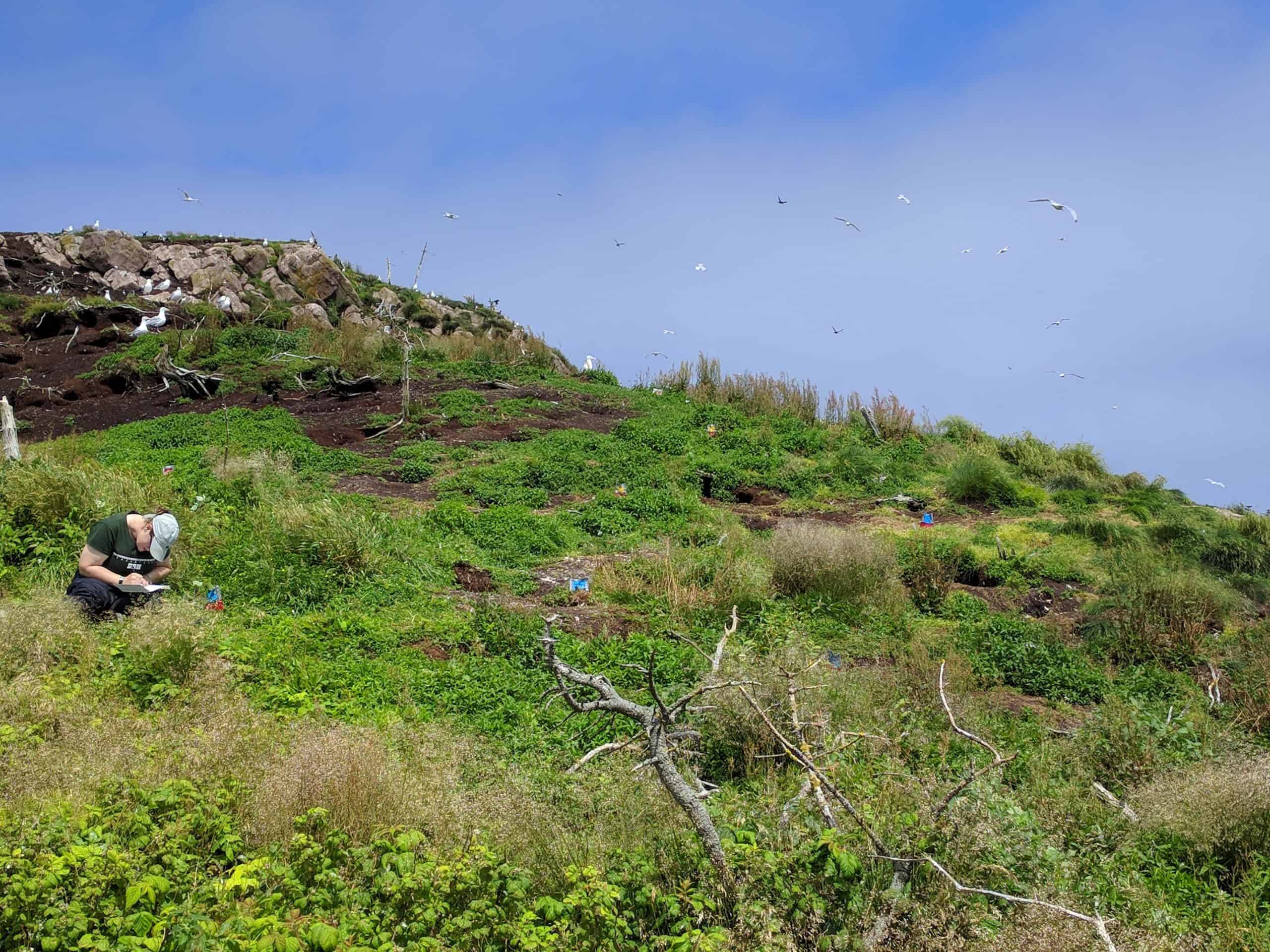
Kaylee Busniuk/Wilson Animal Behaviour Lab
Busniuk, pictured above, was conducting research as part of her master’s thesis in behavioral ecology at Memorial University of Newfoundland on herring gulls (Larus argentatus) routinely stealing fish from Atlantic puffins (Fratercula arctica) off the coast of the main island of Newfoundland.
Previous researchers observed herring gulls stealing food from puffins as the latter returned from foraging trips at sea to their chicks in burrows. Herring gulls will eat puffin chicks that stray from their burrows, but many gulls otherwise subsisted on eating spawning capelin (Mallotus villosus) fish on the beach or picking at mussels along the shore. But when the capelin aren’t spawning, the buoyant gulls aren’t as good at diving underwater for fish than puffins. Some ate food from a nearby refuse area, while others seemed to prefer letting their puffin neighbors do the work.
Puffin parents fly out for trips that sometimes last for hours, scanning the ocean until they find schools of capelin or other suitable prey. Busniuk initially wondered whether gull thievery was affecting the puffins, but a search through the literature showed that this probably wasn’t the case — at least on a population level.
Then, she wondered why the gulls were targeting puffins in the first place. She looked at the factors that seemed to affect whether gulls were more likely to steal the puffin’s prey, and what factors made these heists more successful.
Enlarge
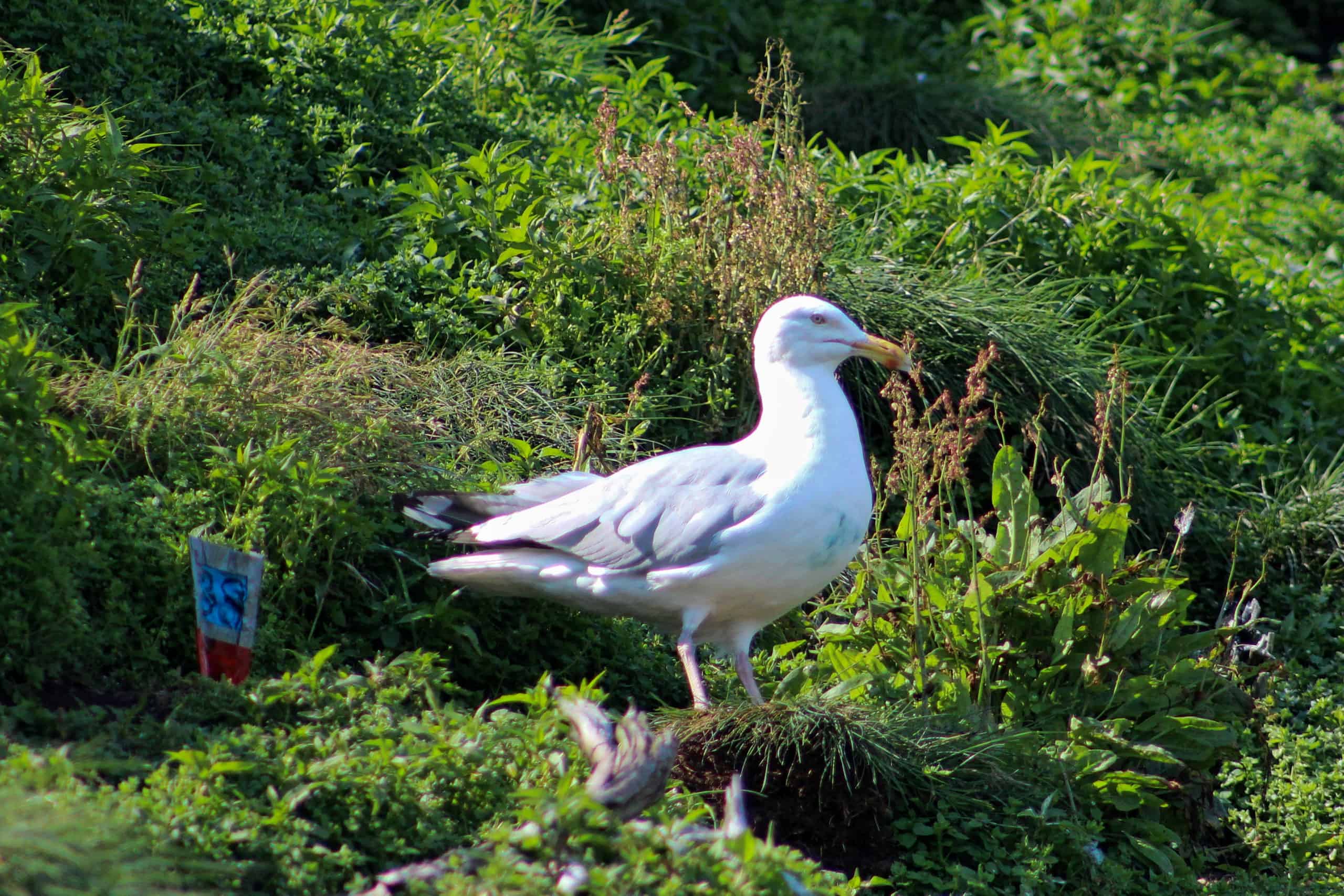
Kaylee Busniuk/Wilson Animal Behaviour Lab
They set out to observe gulls and puffins on Gull Islands in the Witless Bay Ecological Reserve near St. John’s, Newfoundland. Busniuk watched individual gulls for half an hour each. In order to keep track of which bird was which, they placed dye paste near spots where the gulls often hung out. Once the bird stepped in the dye and preened its feathers with its beak, it would spread the dye around in a unique color pattern, such as the blue on the picture bird’s breast. The dye would last for a couple weeks and help the researchers identify individuals and keep track of the unfolding action. Busniuk then removed the excess dye on the ground so the pattern on the birds wouldn’t change.
For the next two months, she sat surrounded by bird guano, watching gull and puffin interactions on the island. “You have to get use to the smell,” Busniuk said. Meanwhile the din of seabirds sometimes became deafening at night, when nocturnal storm petrels began chatter. “There’s never quiet time on the island,” Busniuk said. But, still, she said the experience was amazing.
Enlarge
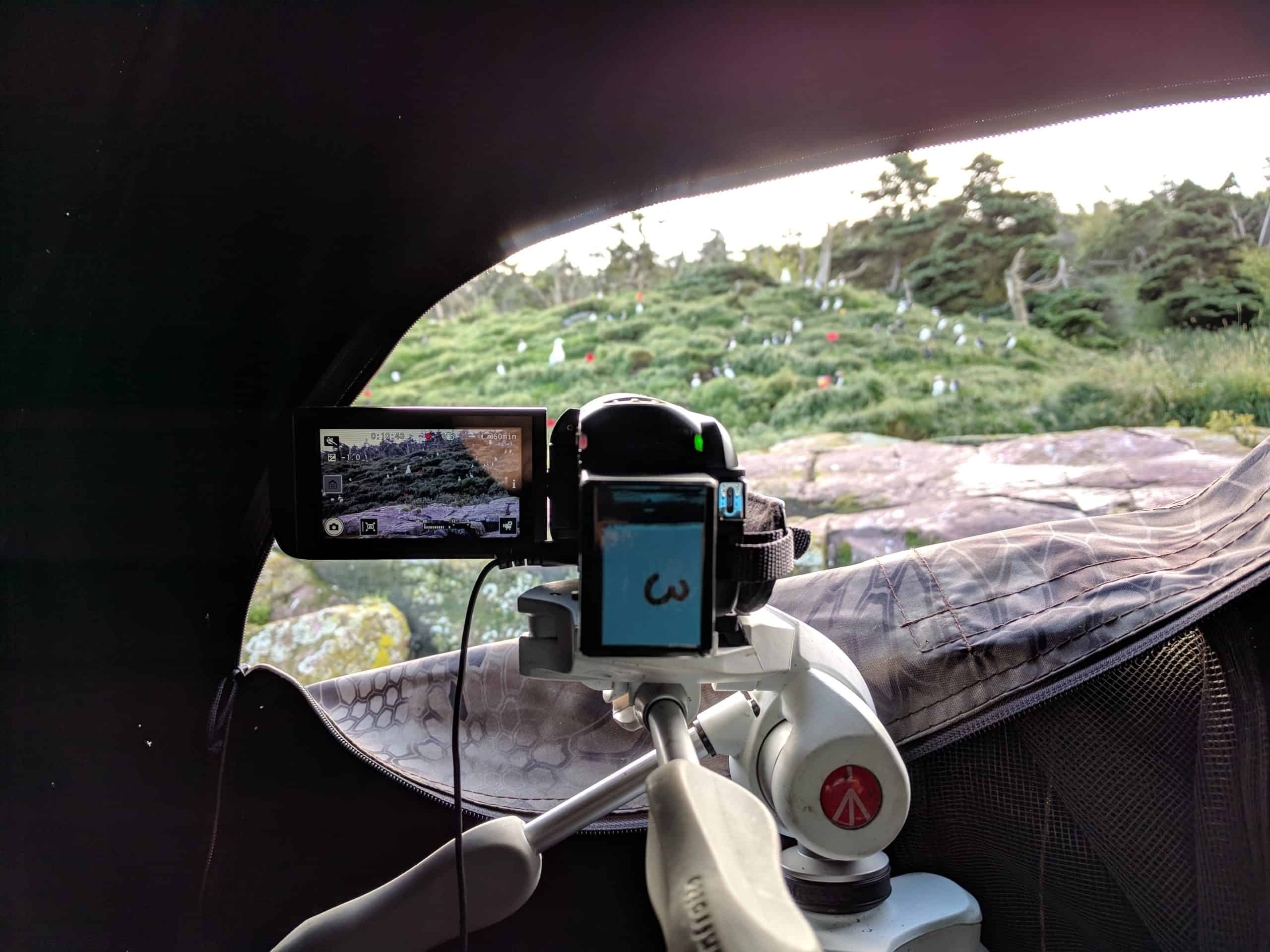
Kaylee Busniuk/Wilson Animal Behaviour Lab
The team recorded gulls’ activity with a camera on a tripod and later analyzed their actions in the laboratory. They had previously set out colored flags on the ground at measured distances, so they could measure the distance between landed puffins and landed gulls while watching the videos later. Because the action that unfolded live wasn’t always apparent on screen — it was sometimes hard to see whether a gull successfully robbed a puffin’s lunch, especially if its back was turned — Busniuk would announce a play-by-play of the action on camera.
Enlarge
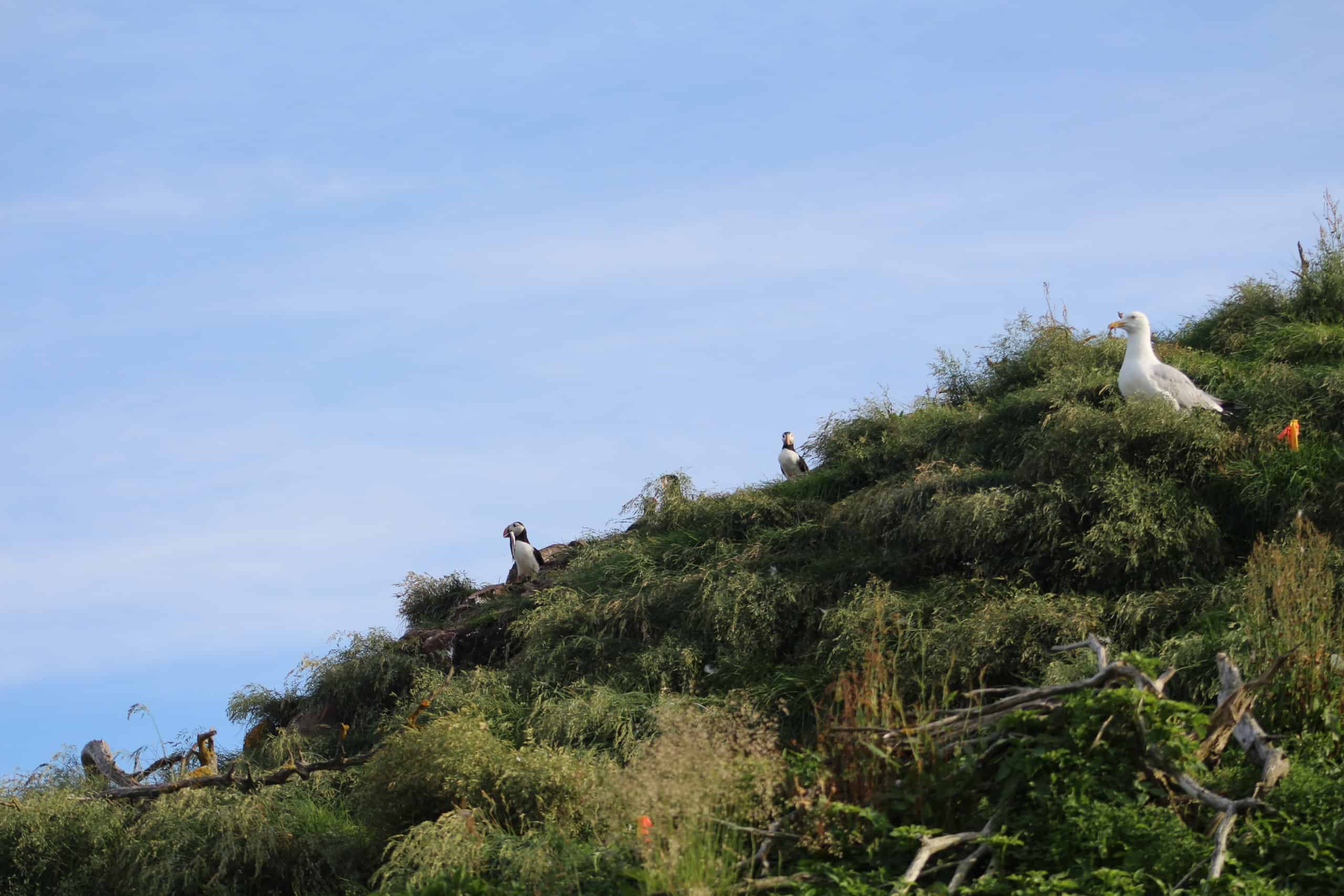
Kaylee Busniuk/Wilson Animal Behaviour Lab
By analyzing the videos, the team discovered a couple of things, described in a study published recently in Animal Behavior. First, they found that herring gulls weren’t just messing with the puffins for the sake of it — the gulls only targeted puffins that arrived home to their nests carrying fish like capelin. Unlike other seabirds, puffins can’t hide fish in their throats to regurgitate later for their chicks. Instead, they typically fly with fish hanging from their mouths, making potential victims obvious to gulls. Busniuk said the gulls seemed to target puffins carrying larger fish like capelin more often versus puffins with smaller prey. But she said she isn’t sure whether this is just because larger prey is easier for them to see or whether it’s a conscious decision to target more loot. In any case, targeting puffins with more food increased the potential reward.
They also found that the most likely scene of the crime was right when the puffins were landing. The puffins fly faster and are quite a bit more maneuverable than gulls while in full flight. But on the ground, they are rather clumsy. They usually land and wobble as quickly as they can toward the burrows where their chicks are awaiting their meals. The gulls home in on this opportunity, and even seem to track their projected landing, attacking the puffins just as they slow down to hit the ground or shortly after.
“Sometimes the herring gull can grab their tail feathers and pull them out [of their burrows],” Busniuk said.
They also found that the gulls more often targeted puffins nearby them. This is likely because it’s easier, but Busniuk said this is likely due to the fact that the gulls that steal puffin food usually have chicks of their own they are watching. Herring gulls are known to peck the chicks of neighboring gull rivals to death when unprotected, so parents are likely reluctant to stray too far from their own chicks to steal a meal.
Busniuk also speculated that it takes a thief to raise a thief. She observed that gulls that stole fish from puffins would sometimes run over with the fresh loot to feed to their chicks instead of ingesting it and regurgitating the fish as they normally do, as the video above shows. She wonders whether these herring gulls are somehow teaching their chicks that stealing puffin food is a viable source of nutrition.
Finally, the researchers found that the initial distance between the gull and the puffin before the attack didn’t seem to affect the ultimate success of the gulls’ operation. But they did find that about a third of the gulls they observed stole from puffins, though she noted this percentage could be higher since they only watched each gull for half an hour per day.
“This paper is important to fill some of the basic gaps that were missing,” she said.
This photo essay is part of an occasional series from The Wildlife Society featuring photos and video images of wildlife taken with camera traps and other equipment. Check out other entries in the series here. If you’re working on an interesting camera trap research project or one that has a series of good photos you’d like to share, email Joshua at jlearn@wildlife.org.
Header Image: Puffins can’t hide the food they capture in their throats like other birds, making them easier targets for thievery from other birds. Credit: Kaylee Busniuk/Wilson Animal Behaviour Lab



